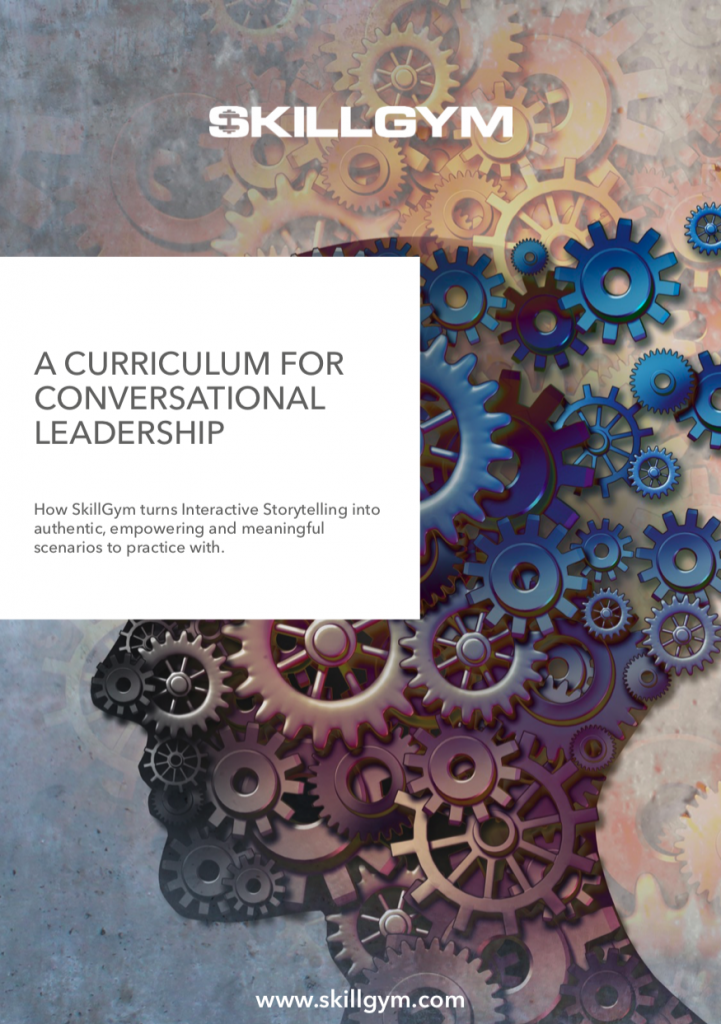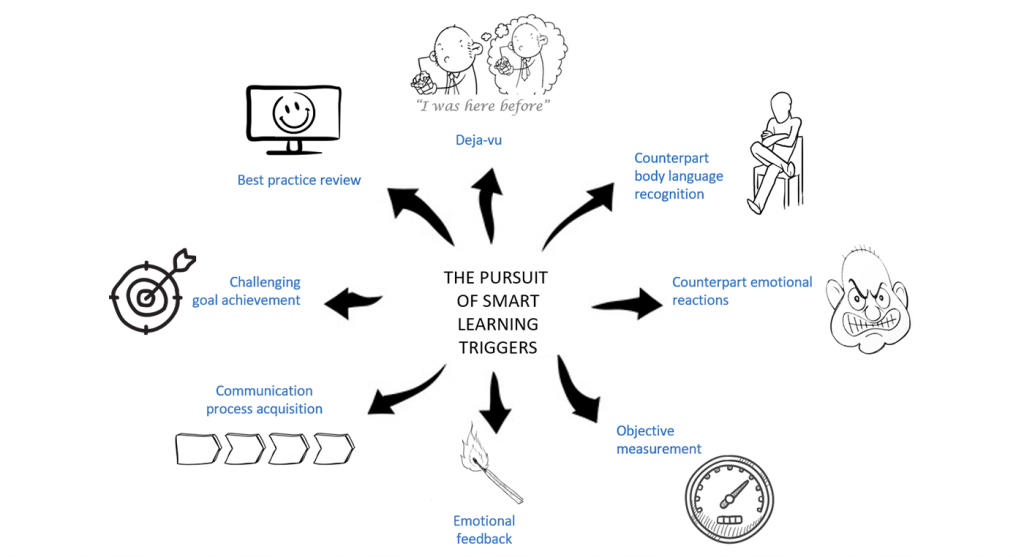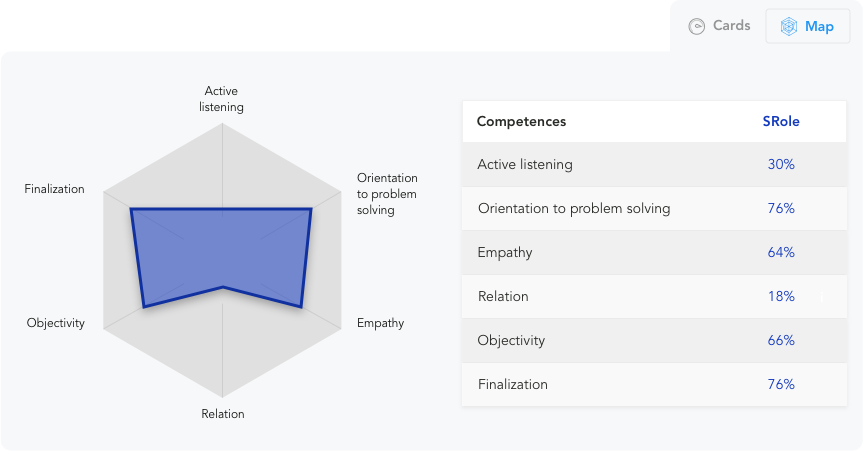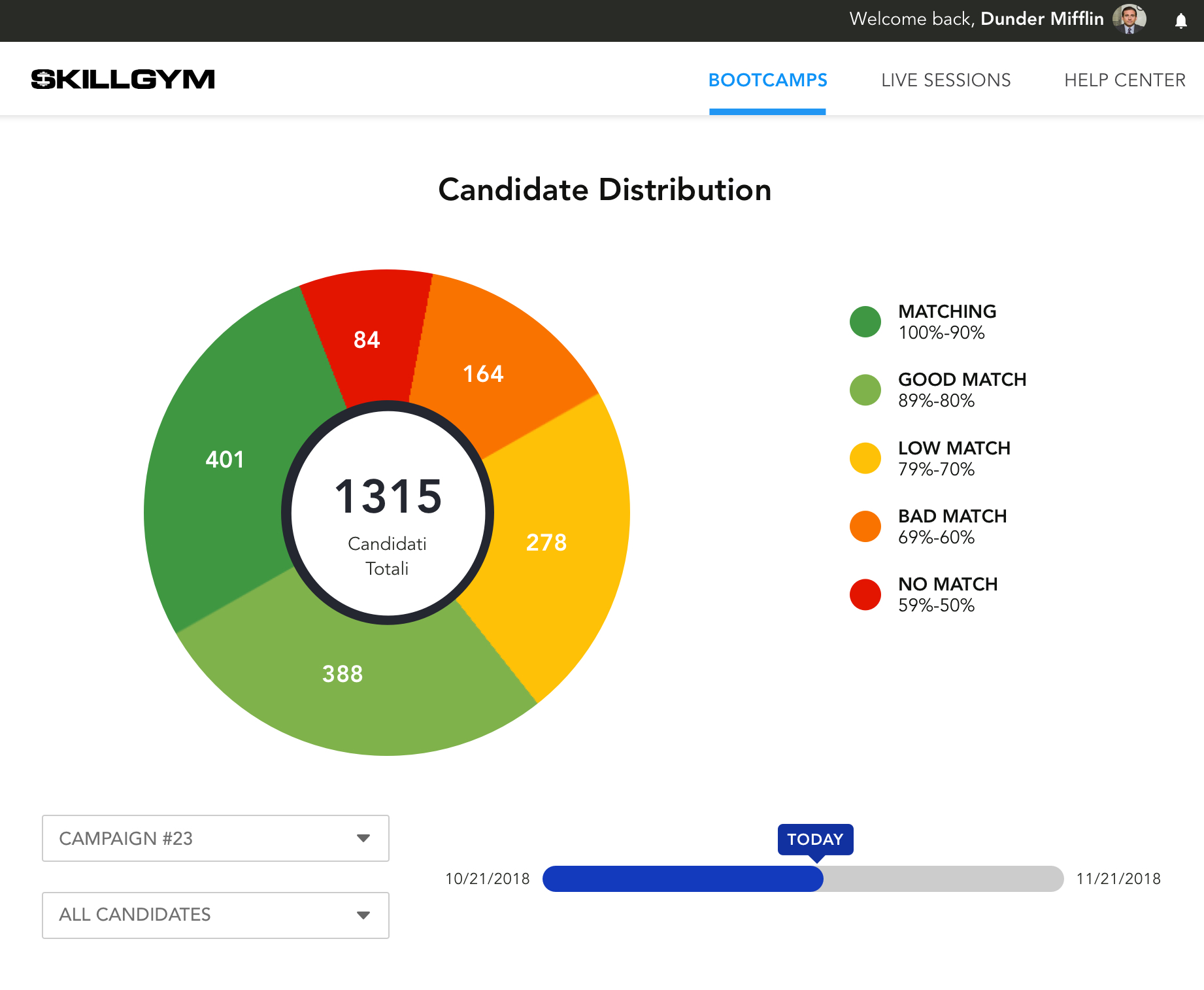
As mentioned in this previous article (“Make SkillGym the Barebones of an Effective L&D Strategy”), a lot of L&D professionals report difficulties in making new HR technologies (the so called “HR-tech Universe”) quickly actionable and integratable in their L&D strategy.
Often this is described as the consequence of a general scarcity of resources (economic, logistic, etc.) of people development departments, but this is not always the case.
Many times, in fact, the slow adoption of innovative solutions is the result of a deep-rooted mindset of “pit-stop” learning where, even if new and innovative approaches are applied, they most often result in very short experiences for the trainees, typically a couple of days, in line with the consolidated class training framework.
In this situation, methodologies and tools based on practical learning are pushed in the area of the so-called knowledge-transfer nullifying their effectiveness and huge potential.
The result is that they provide only a weak awareness on practices or techniques without consolidating them into the continued practical experience that drives to a consistent performance.
However, the good news is that there is an increasing number of companies starting to approach HR-Tech vendors to benefit the support of technological innovations, such as AI-based Individual Adaptive Learning, Augmented Reality, etc., to develop and maintain their people’s skills with consistent practical learning approaches.
The back side of this is that the majority of them are still looking at HR Innovations with what we call a “predator approach” trying to satisfy the last and more urgent need with a “surgical injection” of innovation into an already designed program, where they should, instead flip their perspective and think how they can evolve their programs into the opportunities offered by HR innovations.
In our experience, the general approach of L&D professionals to the Digital Role Play (DRP) methodology is not exempt from these dynamics.
We (my team and I) can report many cases of L&D professionals deeply impressed by the positive impact of DRP on people development even when they embrace it with the “Pit-stop” approach mentioned above.
In some ways, it offers some short-term results on learners, but unfortunately, it doesn’t allow for the full potential of Digital Role Play tools to be exploited.
Eras of application in L&D programs have, in fact, confirmed the effectiveness of role play techniques to consolidate theoretical and inspirational learning, but have even shown their limitations.
To enable a consistent and sustainable behavioral change, a different approach is required.
The good news is that Digital Role Play tools, if well applied, are able to sustain a true development of behaviors through time, going beyond these limitations.
L&D professionals tend to approach Digital Role Play tools in the same way they do with the traditional role play.
It happens for two main reasons:
- Digital Role Play is as powerful as traditional role play in providing an effective way to practice Conversational Skills.
- At a first sight, Digital Role Plays look to be simply the digital version of role plays. That, however, isn’t actually the full picture.
Digital Role Play offers more than its “non-digital version” because it goes beyond some of its limitations by providing a lot of new opportunities for personal development.
This article explores these opportunities based on the premise that it makes sense to evaluate a complete flip in the L&D strategy assuming Digital Role Play as a main activity to exploit the behavioral metrics that are usually provided by this kind of applications to drive the application.
In a well-balanced strategy, “pit-stop” learning activities have to be considered as an effective response to specific needs that emerge by evidences collected in the Digital Role Play practice.
In this way, they become timelier, more impactful and appreciated by learners in addition to being extremely measurable (as you can monitor their impact on the Digital Role Play practice).
Let me clarify further.
Consider typical People Management or Customer Care training programs.
Those are normally basic courses (historically based on class-training, now “refreshed” adding some e-learning pills). They are usually provided to new-in-role managers or sales reps to support them in dealing with new duties and responsibilities.
Those programs, still largely diffused, offer a strong knowledge transfer imprinting as they include a lot of theoretical elements, Dos and Don’ts lists or instructions and, usually, a smaller number of learning by doing elements.
Practical exercises are commonly covered by individual or group activities. Sometimes those activities are innovative and mind-opening such as pills of Design Thinking (research, define, prototyping, etc.) or Collaborative Solution Definition while other times they are built using more consolidated items, such as card games, puzzles, role plays, surveys, etc.
All of them aim, with different angles, to give a concrete and physical application to the theoretical elements transferred during the training program.
As mentioned above, Role Play Techniques are probably among the most effective ones to achieve this objective in the short-term, but unfortunately, often they are not enough to enable a deep and sustainable behavioral development in the mid- and long-terms.
Let’s move back to the L&D professionals to analyze the main limitations of Role Play Techniques they report:
- They cannot be constantly performed due to economic and logistic sustainability, as the trainers are not always at the disposal of all of the learners to conduct role plays
- Those activities put people in situations where they are observed by others, sometimes feeling judged, which could be an issue for reserved or self-conscious employees
- They are not enabling an individual consistent self-development path, since those are often one-shot activities, normally limited to the training program time frame
In this context, “injecting” a Digital Role Play tool into a one-shot training program is not the optimal way to express its full potential even if it is the most natural temptation for the reason explained above.
A deeper reflection on the L&D strategy is needed, as DRP tools, in particular the AI-driven ones, offer a sustainable opportunity to enable remarkable and persistent behavioral developments.
The benefits brought by Digital Role Play tools
As explored in detail in this previous article (“Digital Role Plays, the Best Way to Develop Conversational Leadership”), DPR introduces five benefits in the application of role play techniques:
1. Consistency of practical training
Behavioral changes require time and consistent practice. DRP platforms make it sustainable from an economic and logistic point of view.
2. Scalability
Everyone deserves the opportunity to improve.
DRP allows the application of the effective “Learning by Doing” approach to all of the employees in a very immediate and manageable way.
3. Metric driven
DRP solutions provide a set of homogenous and unbiased behavioral metrics for the entire learners’ community. It allows L&D professionals to obtain a complete picture in order to set objectives and design specific actions where required.
4. Self-awareness through conversation review
Having the opportunity of self-reflection is a key element in personal development. The best Digital Role Play allows the learner to re-watch the performed sessions adding additional behavioral insights to build internal and external self-awareness.
5. Safe environment
DRP solutions make trainees feeling “safer” than when they play a traditional role play. In fact, they remove that feeling of “being judged during confrontation” that can embarrass and even block some people, in favor of a more natural way to express themselves in the role play session.
As a direct consequence of the elements above, instead of focusing on the elements of similarity between Digital Role Play and role plays, it is worth leveraging the elements of differentiation between them, as they provide an immediate clarification on how a flip in the entire L&D Strategy in the direction of DRP brings a lot of benefits.
I’m referring, as a first element, to the direct measurability of the impact of an L&D strategy when it embraces the DRP approach.
Secondly, its scalability makes the difference in many contexts in providing a consistent (and sustainable) support of practical learning for the trainees.
On top of that, some DRP solutions come with Adaptive Learning features that allow each single trainer to get and follow a meaningful and effective individual learning path.
Take a look at this article (“SkillGym Digital Fitness: Pure, Adaptive Leadership Training”) about Digital Fitness to read in-depth on this topic.
Self-development path to improve confidence and awareness
As mentioned above, Digital Role Play tools offer the opportunity to exploit a wider set of benefits to sustain a process of behavioral change. It takes time and requires a constant effort to be kick-started and sustained through time.
DRP tools have to be conceived as life-long companions for growing organizations that put people’s development in the center of their strategy.
This conclusion is strictly related to the development of individual confidence and self-Awareness (see this article “Self-Awareness: the Single Factor Influencing the Most the Speed of Leadership Development” -and the recording of this webinar– for an in-depth analysis of the fundamental role of Self-Awareness in developing Leadership).
Leadership is a complex matter, sometimes an empty and too broad of word, but certainly it implies a status that has to be recognized by others and not assigned “as a badge”. It means that leaders have to embark on never-ending self-development paths to improve their soft skills.
On the one hand, they have to become masters in leading their teams, inspiring, communicating and acting in the direction of empowering people toward a set of shared objectives.
On the other hand, leaders must have a top-notch mindfulness and sensibility in understanding the true (beyond first impressions and “formal reactions”) impact of their behaviors both from an Internal and External Self-Awareness perspectives.
Being able to deal with these two elements represents a necessary condition to be a successful leader and, of course, it is not for everyone. It implies constancy in practice (that normally means fatigue) and an open mind, ready to accept criticism and negative feedback along the way.
It doesn’t mean that Digital Role Play tools aim to fully replace the current actors of the Leadership Development Industry such as business schools, corporate universities, consultancy firms, etc. (see the HBR’s article “The Future of Leadership Development” by M. Moldoveanu and D. Narayandas, for a very interesting and complete picture of this).
DRP tools offer a booster to support and accelerate current programs, whatever they are, injecting elements of practical learning (which some of them above demonstrate a lack of) with the aim of consolidating and sustaining behavioral development.
Digital Role Plays and the culture fit
It’s time to analyze an interesting point about the adoption of Digital Role Play in an organization.
Revolving around conversational leadership and being deeply connected with the ability of delivering empowering conversations, Digital Role Plays are always measured based on their alignment with the so-called Organization’s Culture.
Defined as “the set of core values, beliefs, and formal and informal ways of interacting that creates the unique environment of each organization”, Culture is one of the key elements leaders have to keep in mind on their journeys as it influences how people evolve and grow.
Surely each organization is different from a cultural point of view, however, there is something to consider when we think about the culture fit of a Digital Role Play solution. Some of the DRP tools, in fact, consider observable behaviors as building blocks of their methodology and scenarios.
You can consider those basic behaviors, such as Asking Questions, Showing Understanding, Involving the Counterpart, etc. as part of the Culture of almost all the organizations.
The way those behaviors are acted (directly or in response to certain stimuli) and how they are organized (with a thoughtful weight) into competencies determine, not only the Competencies Model of an organization, but also its values, beliefs, dynamics, etc., in a word: Culture.
Focusing on basic behaviors, how they are acted and rewarded together with their impact in each specific organization is one of the best ways to ensure an optimal culture fit of a Digital Role Play solution.
Other elements can be considered to maximize the fit, but this is not the scope of this analysis, so let me leave them for another article.
Why flipping the L&D strategy is not only possible, but logical
Let’s come back to the tendency reported in the initial part of this article that “DRP is amazing, let me find a Training Program to inject it in” commonly heard by L&D professionals when they see DRP solutions in action.
In our experience, we saw that the best results (getting sustainable and maintainable behavioral developments) are achieved where there is a flip in the L&D strategy.
It happens when the Digital Role Play practicing paths are made available for the trainees regardless of the training programs already in place. In those cases, instead of “injecting” DRP into current learning modules, we see a flip in the approach, where all the other training programs (e.g., class-based lessons, coaching paths, etc.) benefit from the DRP metrics resulting from the consistent practice of the trainees.
Coming from a unique and homogeneous source, DRP data, in fact, can be used to fine tune, maximize and recalibrate, where necessary, objectives, approaches and scopes of other training interventions.
Employing a Digital Role Play tool as the structural skeleton of an L&D strategy brings measurable and sustainable results because:
- Practicing is extremely useful. See this article (“How Practicing on Digital Role Play Improves Performance: a Case Study”) for an interesting case study on that
- Practicing constantly and consistently is the only way to improve
- Conversations are the essence of everything for human-beings and the core of any leadership development approach
- Training cannot remain a “pit-stop”, bur rather must be seen more as an “ongoing maintenance” part of a never-ending process
In a nutshell
To wrap up some of the conclusions, we can certainly say that the application of the so-called “HR-Tech Universe” that groups all the latest innovations applied to HR management, is one of the most important current trends for L&D professionals.
It’s almost impossible to slight its great potential in terms of both process efficiency and effectiveness.
On the flip side, the application of these innovative technologies and tools into L&D strategies often results in one-shot tests under a what we have defined as a “predator approach”.
Digital Role Play tools, which empower the undoubted effectiveness of Role Play techniques overcoming their logistic limitations, are not out of this dynamic.
Since they provide an effective support to raise confidence and self-Awareness, tackling a matter as pervasive as the ability to manage critical conversations, they should be seen as a long-term companions for learners instead of occasional tools to address specific and time-based needs.
This vision definitely implies a flip in the L&D strategy where a Digital Role Play solution is seen as a structural skeleton from which all the other Learning Programs (that should be maintained “on air”) can benefit by exploiting data and metrics coming from the DRP sessions to maximize their effectiveness.
Feel free to comment below or book a 1-hour discovery call of our tools.



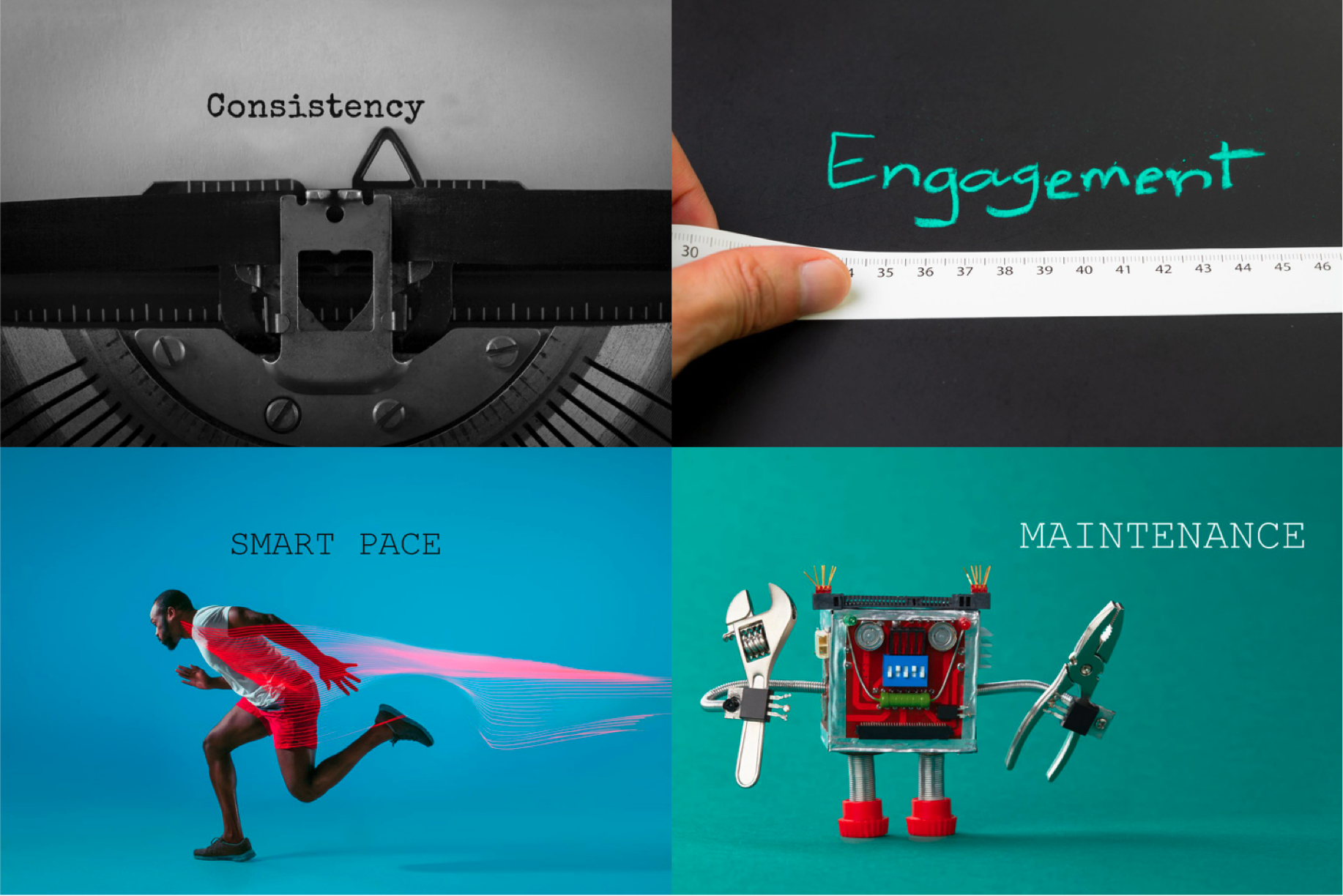
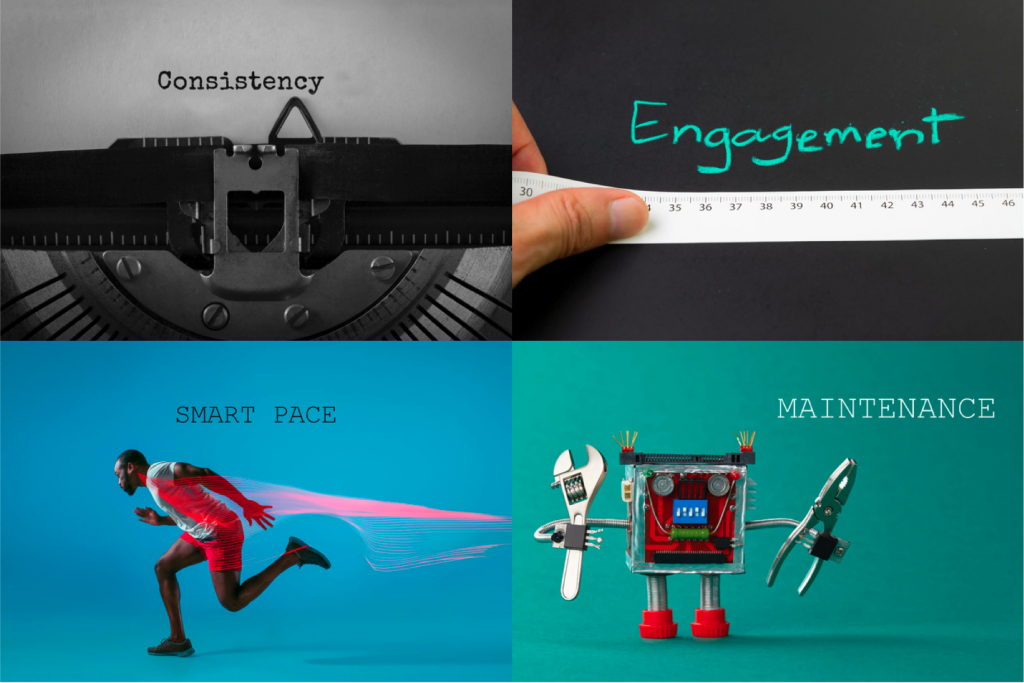
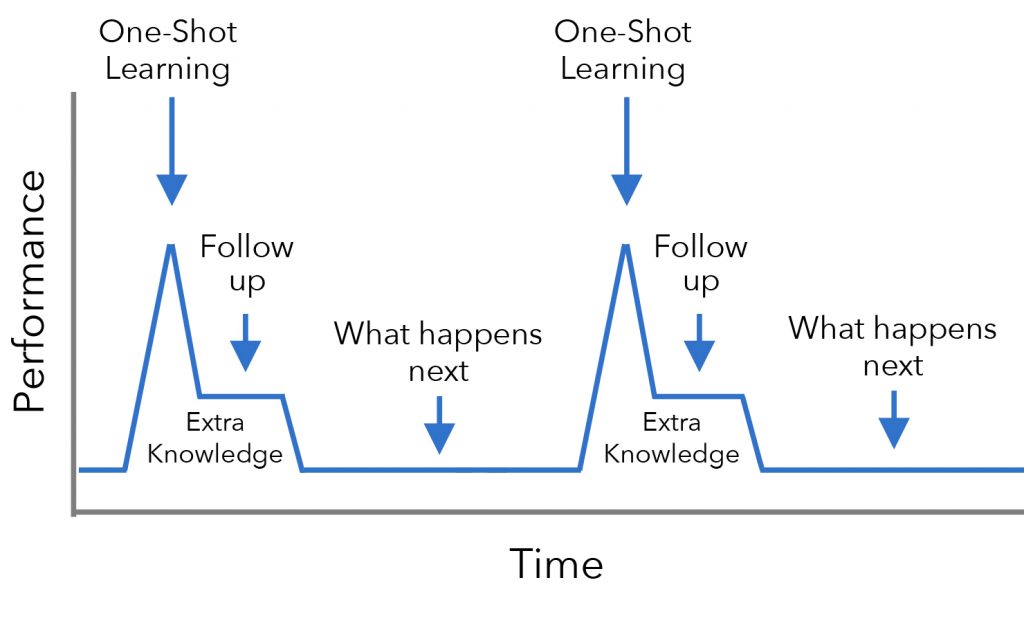 One-shot learning does not deliver.
One-shot learning does not deliver. Practice changes habits.
Practice changes habits.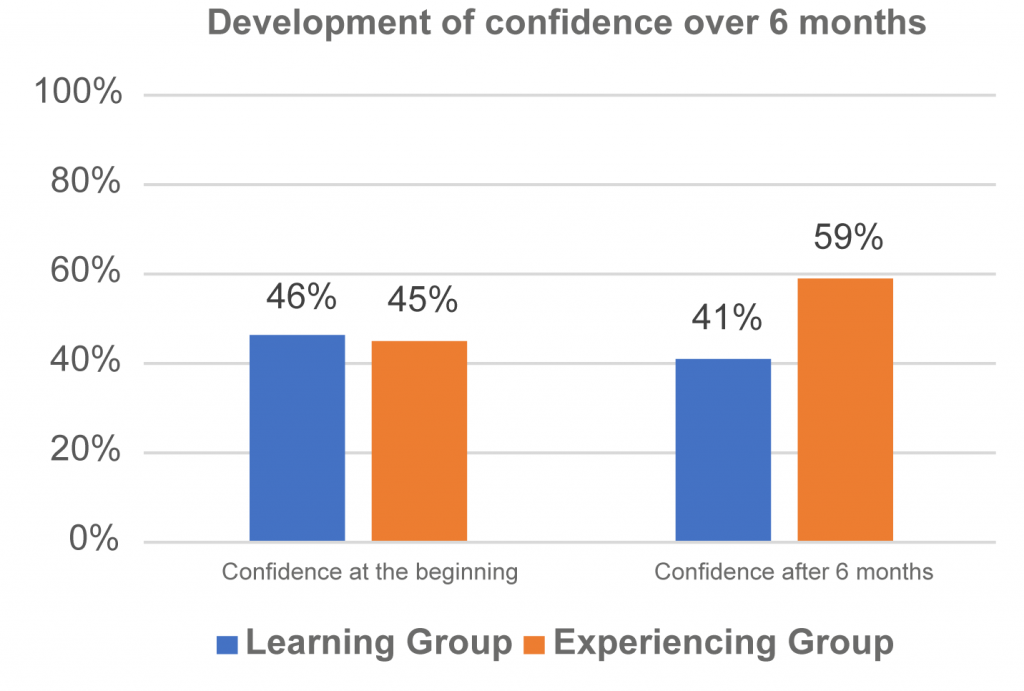 Consistency pays off, all the times.
Consistency pays off, all the times.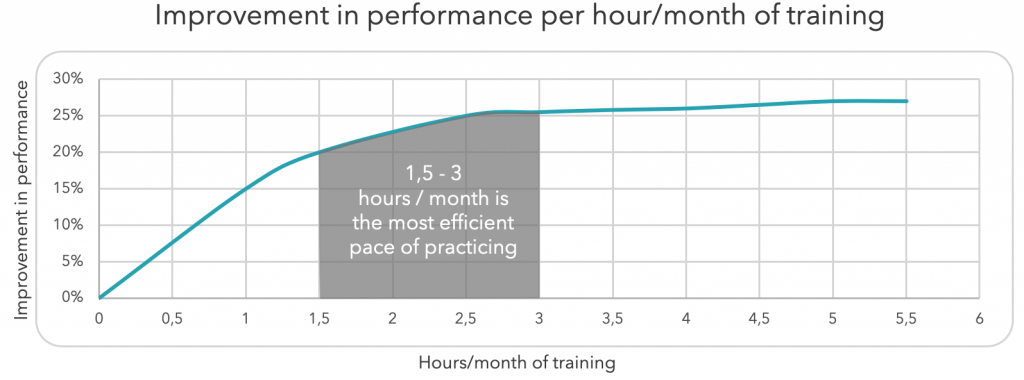
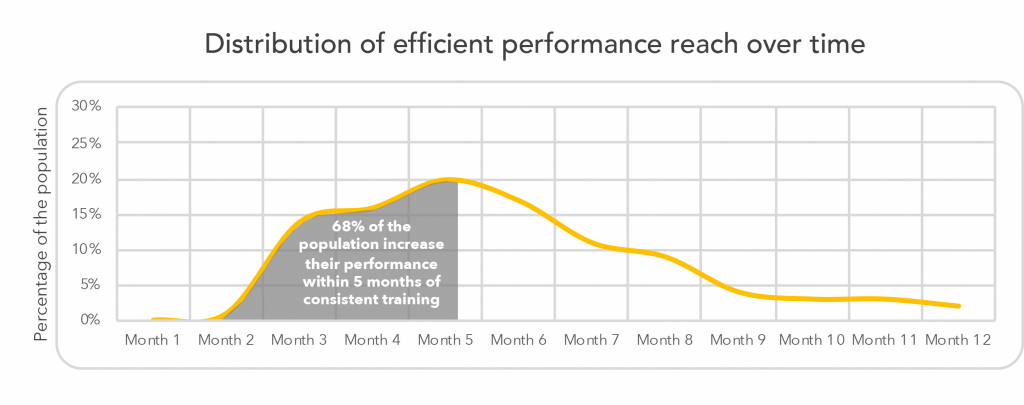
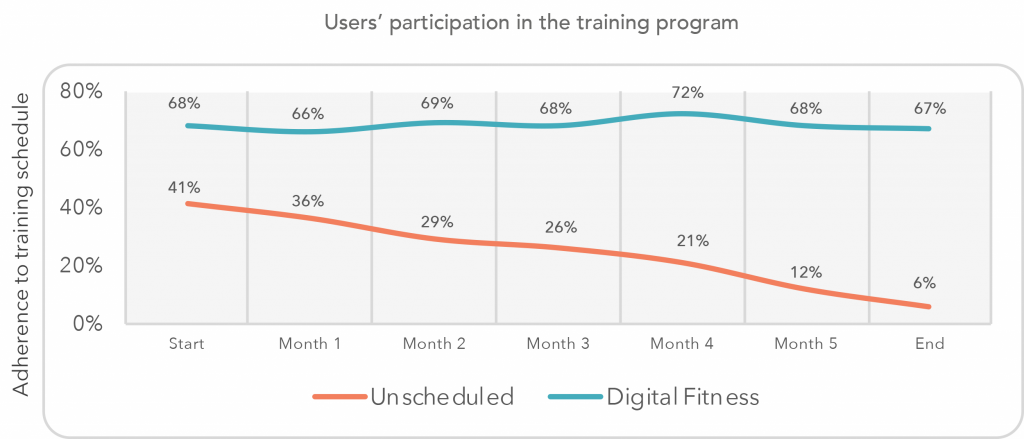
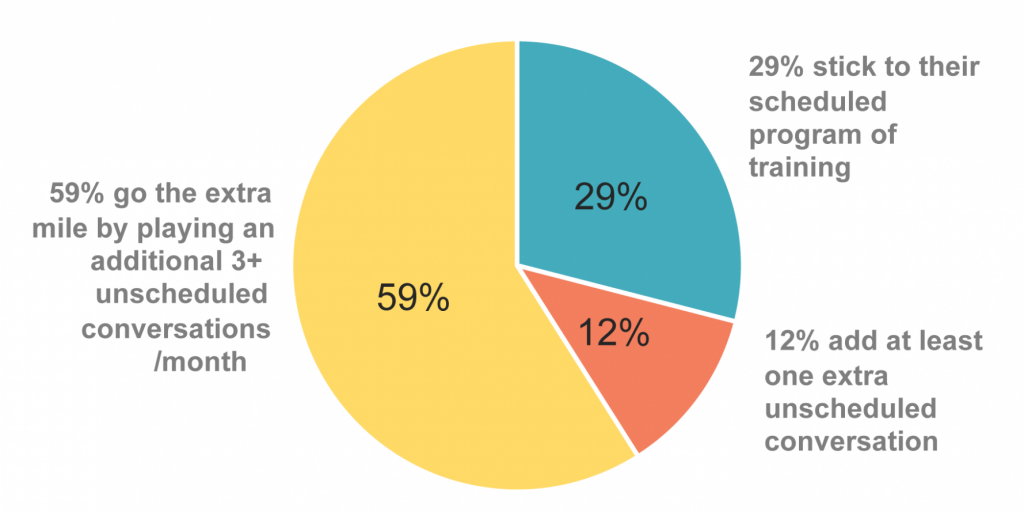
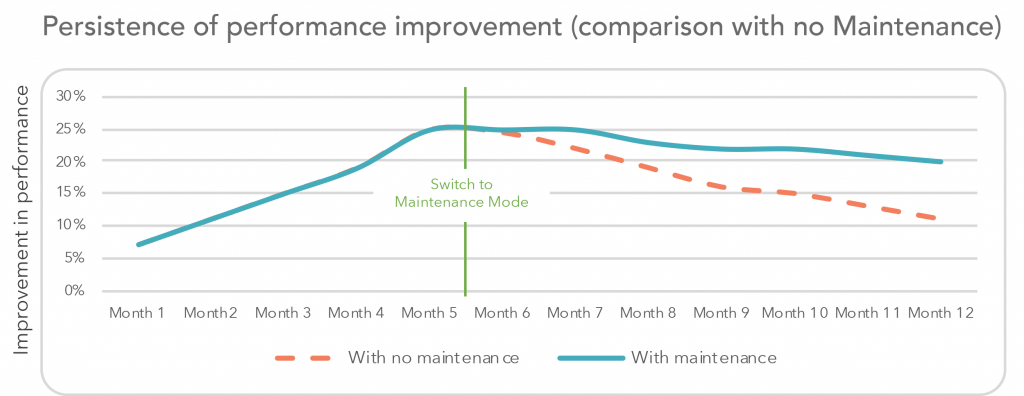

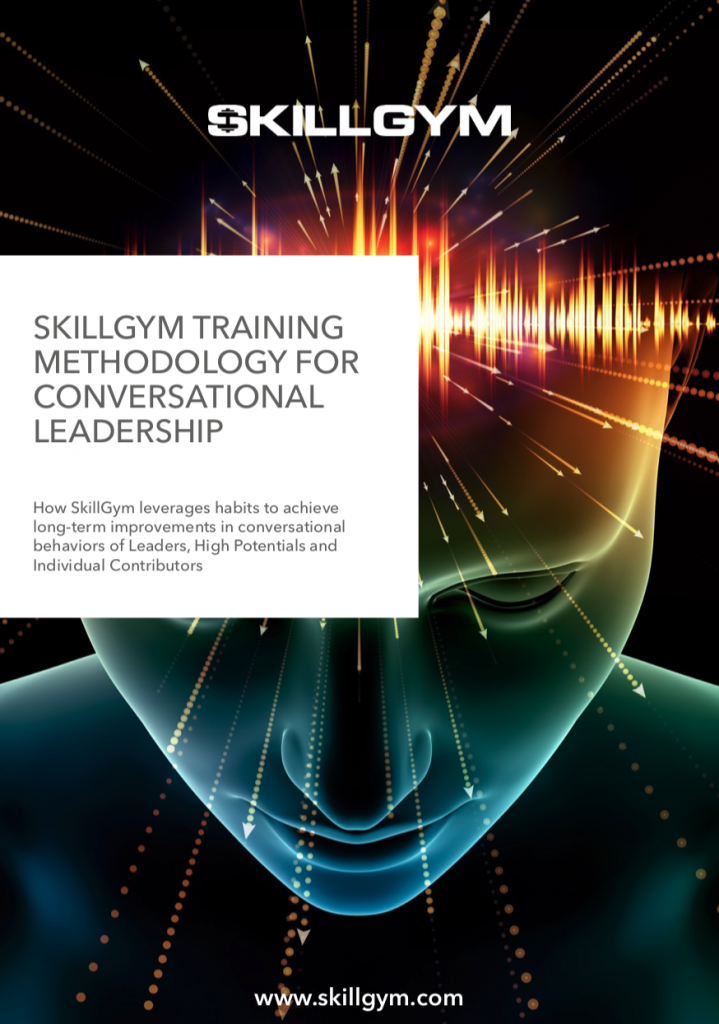 The SkillGym Methodology.
The SkillGym Methodology.